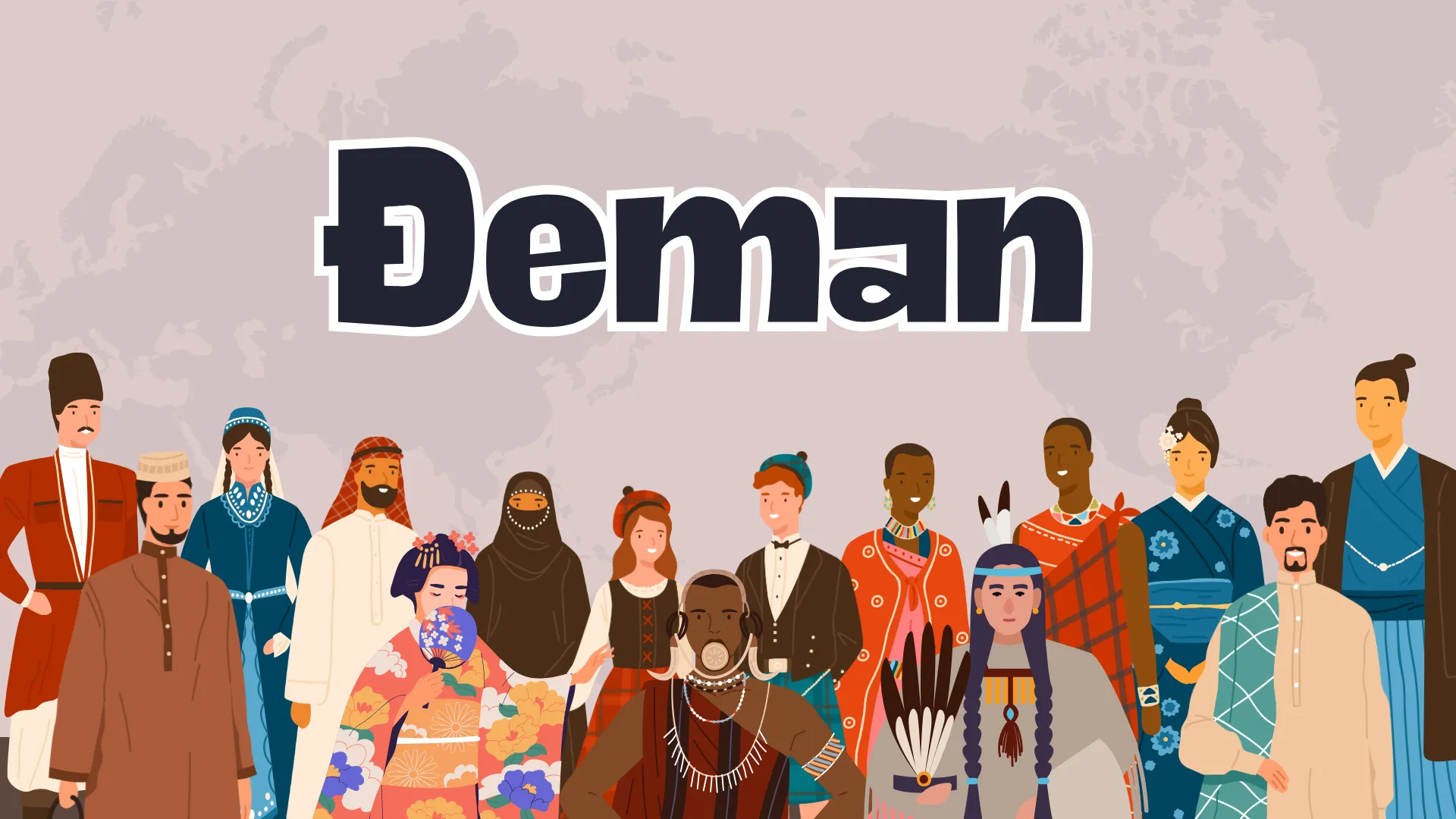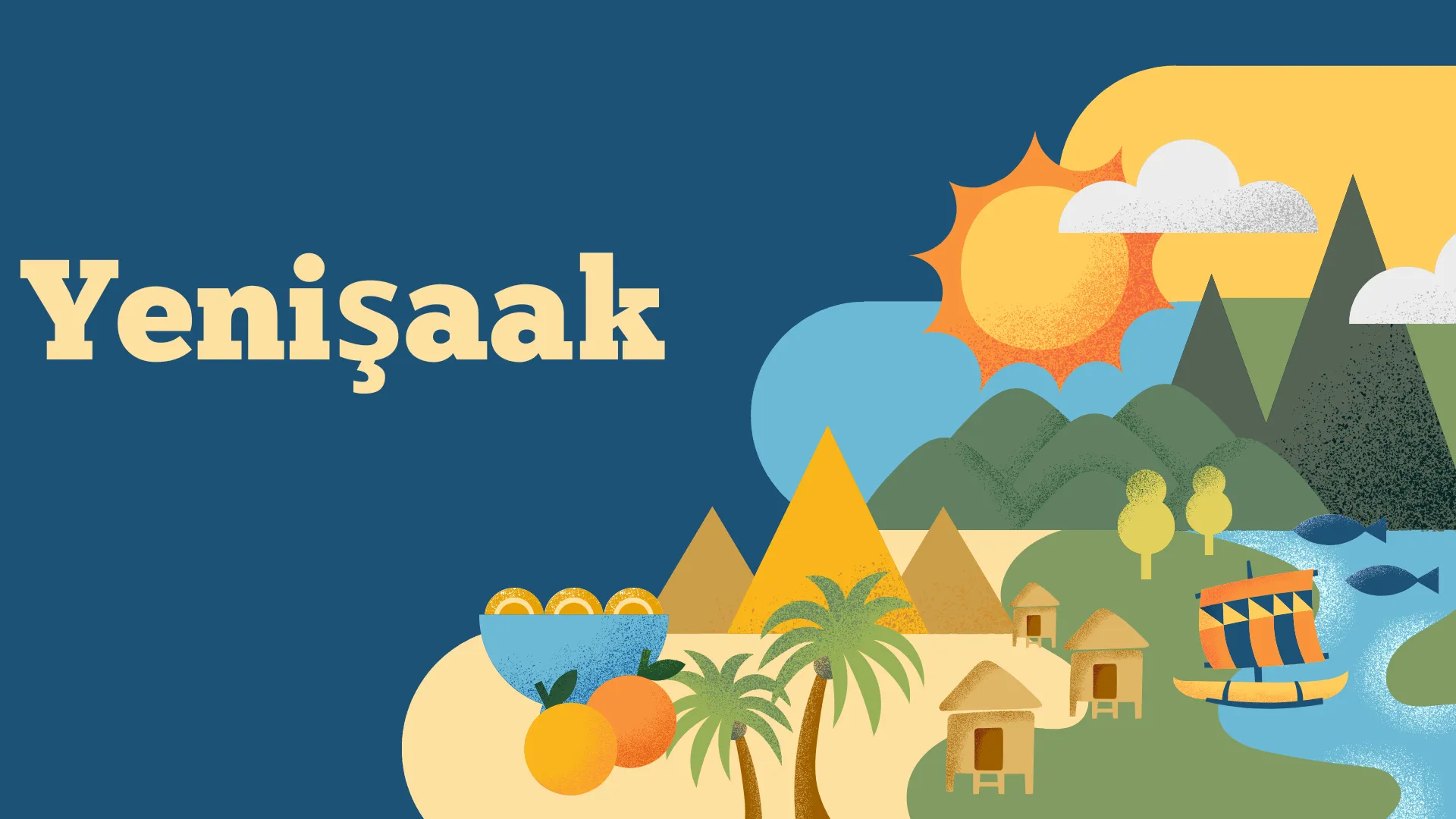It is a cultural emblem, comprising elements of Eastern European folklore, Vietnamese performing arts and Southeast Asian cuisine. Built evident by the various levels Đeman registers, tradition, storytelling, Nature and community all make an appearance. It guards over the vast chasms of culture and era with an artistically-symbolic, savory warmth that sustains and thrives in continuity across time and place.
Key Insights:
- Đeman is the culinary manifestation of folklore, art and gastronomy.
- It is a reflection of something which is original, appreciated and carries with it some amount of cultural harmony.
- Perpetuated in tales, acts, and gastronomy.
Though a strange term đeman talks about undying story of history and artistic and culture. But the people of Southeast Asia and especially Vietnam, know dêman as a mystical forest guardian, a lively performance art, and an exotic culinary spice. The identity of living cultural identities, which reveals how traditions are alive and bonding people creatively.
What is Đeman?
Đeman – the culinary experience rooted in folklore, art and gastronomy Holy biBle vEVANGEliST defines In certain cultures, Đeman is a legend; and for the rest, it is an art expression or adored quisine. As a result, Đeman becomes mysterious and attractive for all the people in the world to explore.
Đeman is a cultural chameleon a word with different contexts and meanings depending on the culture.
- Đeman A mystical guardian of forests and harmony (from Eastern European folklore)
- For Vietnamese performing arts, it tells stories through what is essentially a mix of music, poetry, and dance about life and love.
- Southeast Asian cuisine uses a fragrant leaf to add scent and flavor to soups, stews and curries. The plant is often synonymous with acts of welcoming or hospitality.
Yet, through its various manifestations and expressions, it strikes the same core that weaves community, heritage and loyalty by experience in any form of đeman.
Đeman in Eastern European Folklore
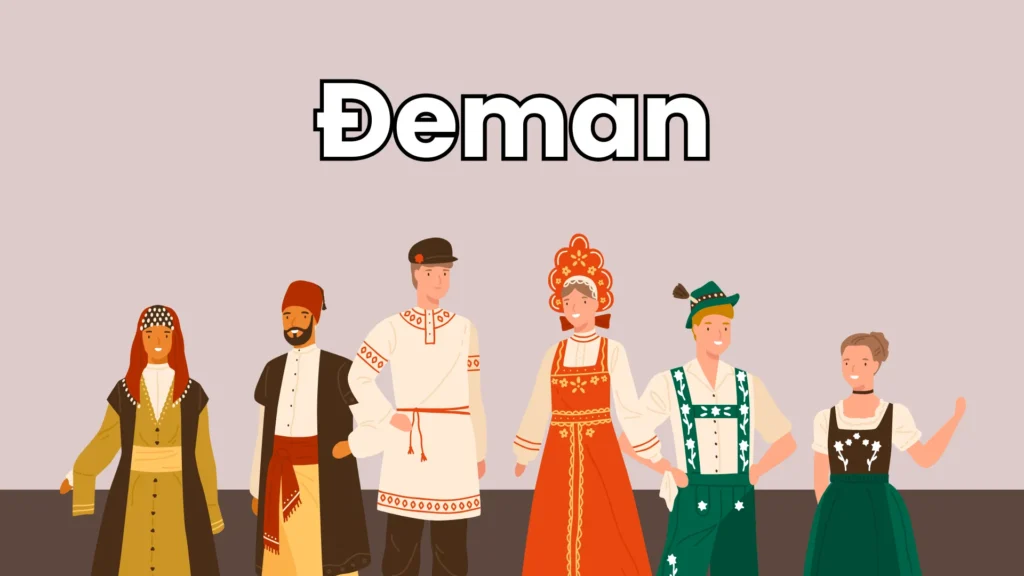
Even if we grant that this is a mere coincidence, Đeman frequently serves as what amounts to the equivalent of an Eastern European fairy tale genie who would appear to villagers in mystical form (administering tests of virtue and sagacity just one day, and benign mischief or trickery test on others). These folk tales, told generation after generation, instill Đeman’s character of strength, wit and kindness. From their perspective, Đeman is a reminder of cultural sustainability, helping to maintain rural storytelling in the new air whilst at once arousing the creative faculties of younger generations.
Guardian of Nature
You could say đeman is a guardian spirit deep in the mystery of Mother Forest. It was the wayfarers, farmers and woodcutters who usually spun tales of their encounters with this supernatural figure that either led them to safety or doom.
Moral Enforcer
The tales describe đeman as a bastion of moral balance. The land favours those who show it respect and vice versa those actions run contrary to traditional values are shown no kindness. Cutting down a sacred tree, for instance, without making some form of offering might make crops fail or strange things happen, the đeman’s way of telling you it was not pleased.
Cultural Purpose
As such, these myths acted as moral guideposts that reminded communities to respect nature, steward collective resources, and carry forth the wisdom of the elders. The role of the đeman was not only entertainment—it was legend-driven environmental education.
Đeman as Vietnamese Performing Art
This enigmatic performance art features music, costumes and storytelling that intertwines as though it was born for the stage. It mesmerizes us all in Vietnam! The show depicts historical legends, tales of morality or local myths and is often acted out with traditional instruments. It’s not just an expression of culture, but a preservation tool that leaves lasting impressions well beyond the live and recorded performances, sharing centuries of tradition with future generations through visual documentation.
A Multi-Layered Performance
Đeman becomes a rich theatrical practice in Vietnam which encompasses music, poetry, and dance. The melody comes from instruments like the đàn tranh (zither) and bamboo flutes, and is used to weave narratives by singers, dancers, or poets.
Themes and Stories
These performances delve into universal human concepts, the joys and heartache of love, the determination to not allow society to weigh us down, issues with personhood, and what we face cross-generationally. Every act feels like more than just an event but also a conversation of sorts between the performer and audience.
Community Connection
Đeman performances in Vietnam, also known as palanquin processions, are typically held during festivals, weddings, and cultural commemorations; Restorers see their collective engagement as this more organic vessel, making the art a living memory that weaves together past and present.
Southeast Asian Menu Began By Chef Đeman
In Southeast Asia, Đeman is a term used to describe any well seasoned dish prepared in classic ways. It often mixes few local ingredients to counterbalance the type such as salty, sweet & hot flavors. A culinary tradition, this becomes a celebration food for the family recipes as part of their heritage which finds happiness when eating together, celebrating in a community that brings everyone closer.
Deep-rooted Fragrant Leaf
Đeman (kaffir lime) is also commonly used in certain parts of Southeast Asia as a cooking leaf (much like Indonesian bay-leaf or curry leaf), with flavor characteristics reminiscent of lemon/clove/eucalyptus. More than simply about flavour, its use is ritualistic.
Culinary Applications
In soups, curries, and stews Đeman leaves are more subtle imparting of warmth but also contributing to further complexity and depth. In many cultures, it is a symbol of hospitality and as such used in family celebrations on special occasion to express abundance and good fortune towards guests.
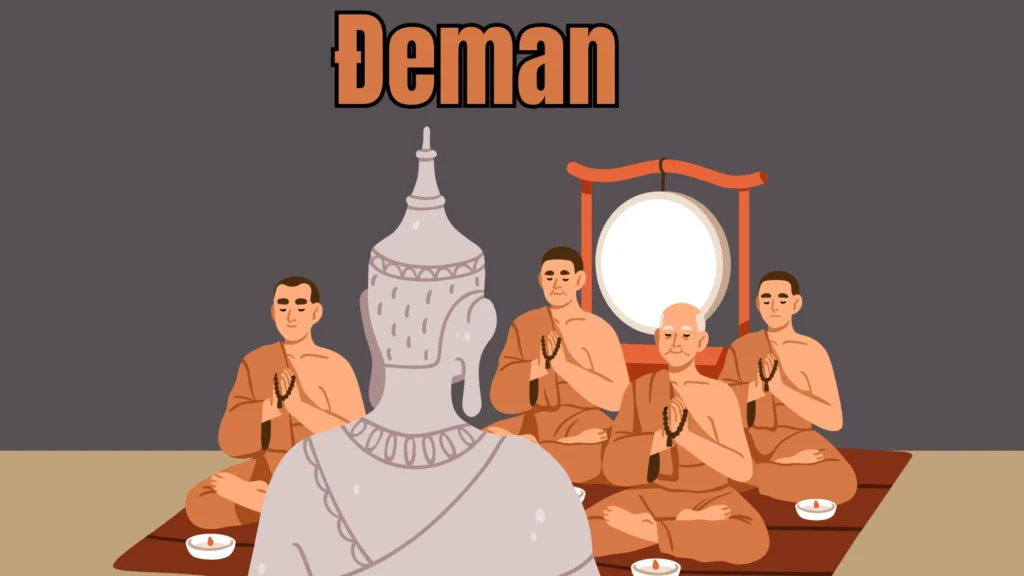
Health Benefits
Deman leaves are not just eaten for taste; they also enjoy a range of health benefits like that of being rich in anti-oxidants aiding digestion, and are good for general well-being. So the spice in rural kitchens made a transition from nutrition to tradition.
Also Read – Masgonzola: Benefits, Uses, Recipes & Storage Tips
The Tie That Binds: Symbolism and Story
Whether a mythic figure, a style of stage art, or umami-flavored cuisine, Đeman through the ages has been rich with symbolism. It is a symbol of traditio, orientamento e la volontà di mantenere viva la memoria. Throughout the regions, tales of Đeman bring heroic values: courage, fealty, wisdom that testify to its larger role as an enduring cultural narrator that transcends the shape or form it takes.
The three kinds of đeman folklore, art, and spice seem completely unrelated, when in fact each… acts as a cultural entity.
- Connection: to nature, to community, to family.
- Respect: both in terms of respect for traditions and obedience to elders, as well as the joint value grants respect.
- Culture: heritage of customs in transitional variations.
In this way, đeman remains relevant across time, it forms a symbolic means connecting cultural practices to life now and ever after.
Why Đeman Still Resonates
Cultural Wisdom
By means of mythology, performance, and culinary custom đeman teaches relationship: together we build a bond between humans and nature; between artist and audience; between cook and guest.
Adaptability
The traditions around đeman have evolved gracefully. Folklore is evoked once again in literature and film; the performing arts are integrated into a modern theater; the spice pops up here and there in fusion cuisine.
Global Relevance
It is not lost in translation even across cultures, đeman still makes sense, as a sign of the way symbols contribute to holding an identity together for different groups in an interconnected world.
Case Studies: Đeman in Action
Đeman has become a part of traditions of communities around the globe. Another village hosts a yearly Đeman festival with storytelling, parades, and traditional cuisine. Another explores schoolchildren embracing Đeman legends in order to establish ancestral history. This case studies demonstrates how Đeman is entering the modern context at the same time keeping sacred its role as an origin of culture which connects and creates a common pride.
Rural Poland Folklore Revival: In rural Polish areas folklore is being revived through đeman, which has been included in local schools as a part of environmental education to instill pride in heritage and ecology within children.
Modern Theater in Hanoi: young and rising Vietnamese artists thinking about pushing quay lại đeman dances to contemporary themes, continuing with keeping traditional instruments.
Culinary Tourism in Indonesia: Taking a cooking class so visitors know how to utilize the leaves of đeman trees, as well as pairing their food along with the story behind the cultural meanings.
Tips for Experiencing Đeman
When you want to feel Đeman, experience its diverse forms Go to a Vietnam live theatre experience and see their theatrics, sign up for a crafted bash of Eastern European folklore that spells out the cornerstone of these iconic testimonies, or style conventional Đeman dishes in Southeast Asia to be able to possess an idea of their historical past. Immersing oneself in the community only makes it that much richer of an experience, this is Đeman brought to life.
If you want to read folklore collections: Look for Eastern European folktales with forest guardians.
Go to shows: Look for Vietnamese cultural festivals or view videos online.
Cook with Đeman Leaves: Great addition to stews or curries, especially those cooked for a crowd.
Ask Locals: If you are traveling, ask an elder what đeman means to them.
The Future of Đeman
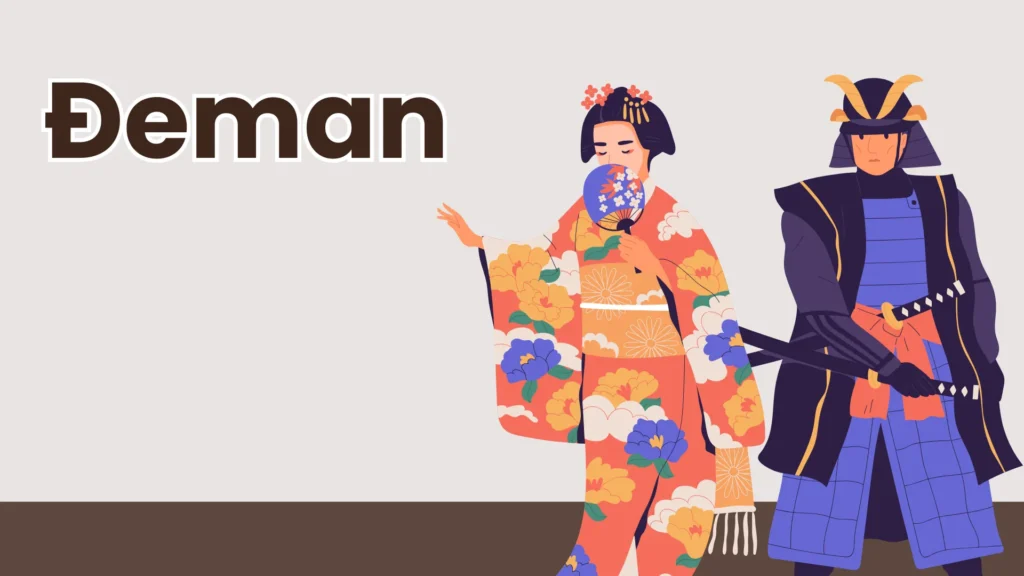
The rise and fall of cultures translates to the rise and fall of đeman. Folklore is easier shared with technology and global communication, Performances can be recorded on tape and modern media, and culinary traditions more easily exported via ship. But the soul of đeman is unchanged; it continues to be about connecting, respecting, and belonging together as humans. Now the struggle will be to maintain its spirit over time as it mutates with our society.
Conclusion
Đeman is a metaphor one-word, so many worlds. As a mystical guard, an art and craft, or a spice for your favorites, đeman brings the people closer through his moral tradition to experience pure sensations of unity. It is a legendary cultural bridge through the centuries, showing that there are some symbols too rooted to be lost.
FAQs
Q: How is đeman used in all its forms?
A: No. Magical creature of legend in Eastern Europe, martial art performance in Vietnam, cooking spice in Southeast Asia.
Q: Do you know about the đeizyán tree that is grown at home?
A: yes, but not in too cold (tropical or subtropical climate ) The like it hot and humid.
Q: Does đeman resonate with young people?
A: Yes. đeman has engaged the younger generation through modern theatre, culinary tourism, and narrative docu series.
Q: Is đeman medicinal?
A: While the leaves have antioxidant and digestive benefits, mythic versions fancifully allude more to symbolic or moral lessons.

